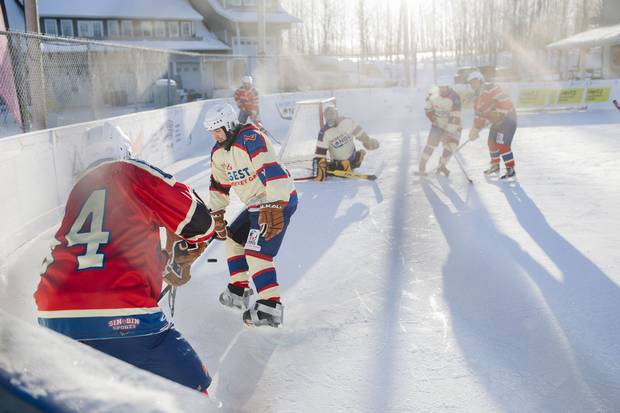His five-hour shift in the world's longest hockey game done, Jouni Nieminen curls up on a couch. His body aches from a fall that occurred as he was skating backward five days earlier. A muscle may be torn inside his left hip. He presses on.
Fatigue and misery surround him inside the dressing room. It is five days into this attempt to reclaim a Guinness World Record, and one of his linemates is playing with cracked ribs. Another's toenails are falling off. A fourth player has a ruptured bicep.
"I might be the only Finnish guy who doesn't drink alcohol," says Nieminen, who came to Canada from Helsinki in 1981 and landed in Port Coquitlam, B.C., Terry Fox's hometown. Nieminen rubs analgesic balm on his wounds hoping it will help him complete this personal marathon of hockey hope, but feels no relief. "I might have to try it."
At 56, Nieminen is the oldest among 40 players participating in the fundraising event on an outdoor rink 40 kilometres east of Edmonton. The game began in -35 degree weather on Feb. 9, and won't end until a record is broken on Monday afternoon. Participants are accepting pledges online, with proceeds benefiting pediatric cancer research.
The existing mark of 250 hours, three minutes, 21 seconds was set last summer by a team of pretenders in Buffalo. They played indoors – and quit one second after extending the record that was established in the winter of 2015 on this same sheet of ice on Brent Saik's property in the snowy Alberta countryside.
It is the sixth game staged on Saik's acreage in Strathcona County since 2003, with a Guinness record established each previous time. A handful of participants – Saik and Nieminen included – have played in each game. One of the skaters, Randy Allan, figures he was on the ice for 1,047 hours in the first five.
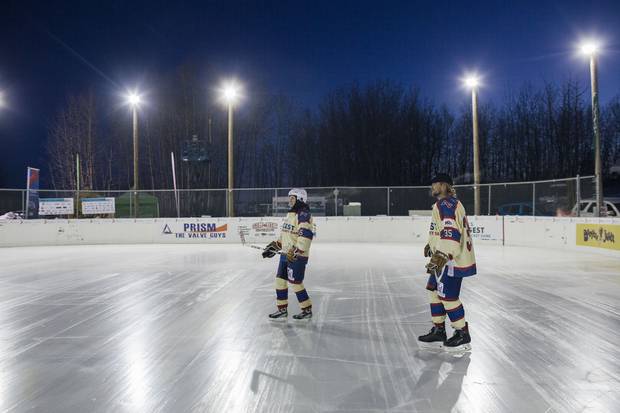
Brent Saik, right, is an optometrist for the Edmonton Oilers who has run the record-breaking games on his property six times since 2003. His wife Jenelle Trenchuk-Saik, left, is the only woman competing this year.
The optometrist for the Edmonton Oilers, Saik organizes the games to fulfill a promise he made years ago as his dad was dying from cancer. Terry Saik asked his son to help children with the disease, and $3.4-million has been raised through the five previous record attempts. The goal for this year is $2-million.
"There are so many things out of your control," Saik says. "Doing this makes me feel better."
His first wife, Susan, died of brain cancer on her 32 nd birthday in 2003, two months after the first marathon game was staged. His mother's aunt died a week later. Now, everyone that plays has lost someone to cancer.
"In one way or another, everyone has a story," Saik says. There are 39 men and one woman – Jenelle Trenchuk-Saik – participating. She is a fellow optometrist and Brent Saik's second wife. On their first date, he asked whether she played hockey.
"I wondered where he was going with that," she says.
She played pond hockey with her brothers, and this is her third marathon bid. She does fine, she says, with the exception of battling shin splints.
"I train by wearing stilettos to work," she says.
In the first seven days, 8,266 shots were taken and 2,395 goals were scored. Slashes and blocked shots are too numerous to count. Each player skates about 15 hours per day. They fight fatigue and frostbite, snow and freezing rain. When the temperature hit -40 one night, they donned ski masks and goggles and covered their noses with duct tape.
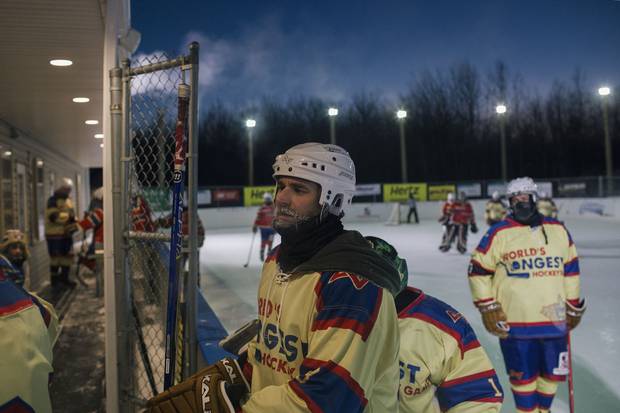
Frost hangs down a player’s beard as the game takes a short break for a shift change.
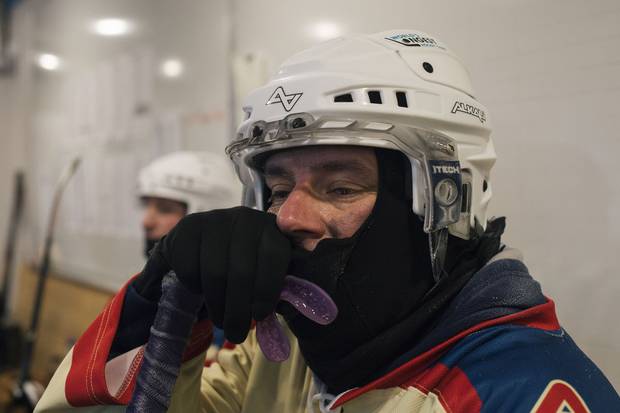
Scott Littlefair, wearing a face mask to protect him from the cold, takes a break toward the end of his shift.
They catnap in trailers parked beside the rink between shifts and take showers in the dressing room Saik constructed beside his NHL-sized rink. He saved $400,000 to build a new house, but instead invested the money in a dressing room to assure the participants in his fundraising ventures would be comfortable.
Players in the world's longest hockey game are separated into two teams. Replacements are not allowed, so if someone gets injured, that player's side is forced to play short-handed. NHL rules are employed, and each team fields five players and one goalie.
In 2008, when temperatures plunged to -55 overnight, Kevin Morris became frostbitten. He had placed heating pads inside his skates but they did no good.
"When I took my skates off, my toes looked like giant white pickles," he says. "Then they started to swell and I felt scorching pain."
When five of his toes turned black, a member of the volunteer medical team heated up a paperclip and used it to drill through his toenails to relieve pressure.
"It went through like a knife through butter," Morris says.
Eight hours later, he was back on the ice.
Along with the players, there are hundreds of volunteers: chefs and chiropractors, massage therapists and nurses, paramedics and police officers, rink attendants and Zamboni drivers. One year, when the officiating crew grew thin, Saik's mother took to the ice wearing fur and figure skates with a whistle around her neck.
Georges Laraque, the former Oilers forward, dropped by one year and refereed for three frigid hours. Connor McDavid and Darnell Nurse, young stars on the current Oilers, visited this week and hung out in the dressing room.
"Grown men turned into little boys," Nieminen says.
In the middle of the dressing room a silver trophy sits atop a beer keg. There's a pile of cash on the floor around it. On a wall are tacked photographs of loved ones they are playing for.
Three years ago, Jamie Edgar fell and suffered a severe concussion while he shovelled off the rink after a snowstorm. Guinness rules about break times are specific.
The game was restarted. Players skated around Edgar as paramedics tended to him on the ice.
Nothing will stop them before they are done.
IN PICTURES
Playing overtime
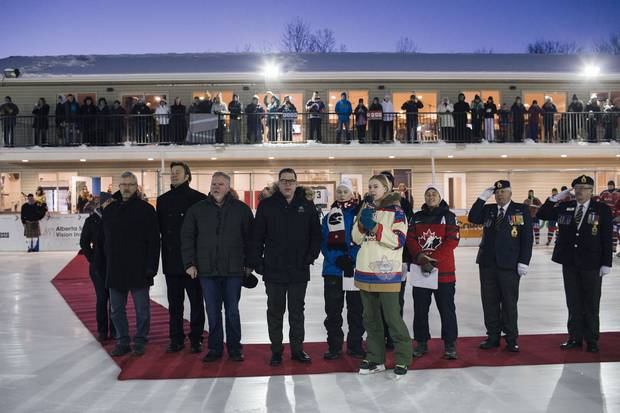
Opening ceremonies for the world’s longest hockey game on Brent Saik’s property east of Edmonton. The participants are raising funds for the Alberta Cancer Foundation.
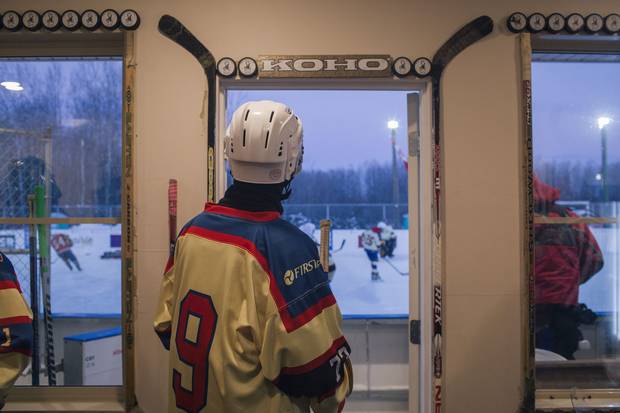
The inside bench. Next to his NHL-sized rink, Brent Saik constructed a dressing room with showers to make sure participants in his fundraising venture would be comfortable.
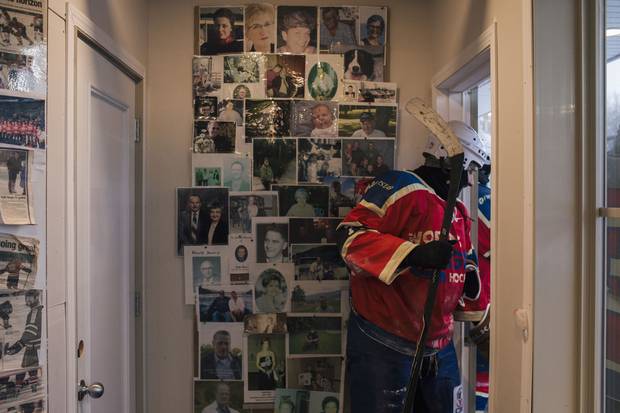
A wall of memorial photographs hangs on a wall by the bench. In order to play in the competition, participants have to have lost someone close to them to cancer.
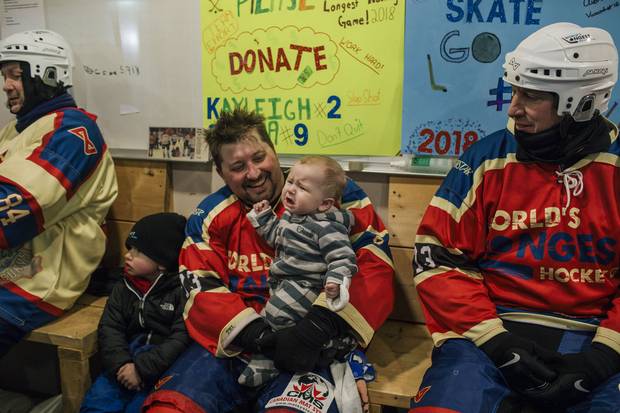
On his break during the world’s longest hockey game, Dan Todd sits with his children, six-month-old Cohan and three-year-old Emmett. Each player participates for about 15 hours a day.
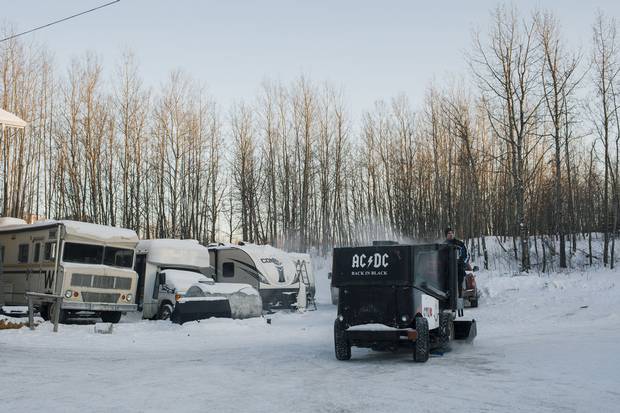
One of the game’s two Zambonis. The event depends on hundreds of volunteers, from Zamboni drivers to paramedics, nurses, police officers and rink attendants.
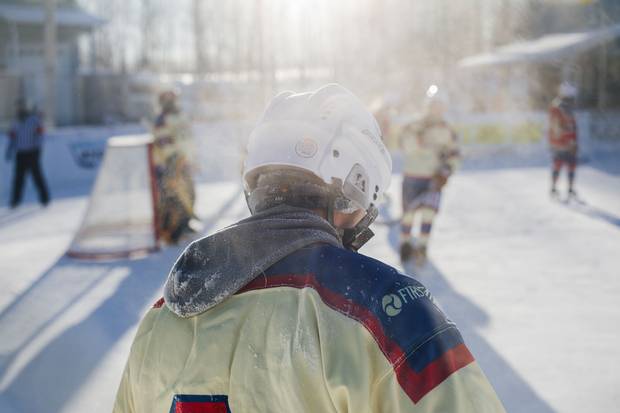
Players are separated into two teams, with five players and one goalie each, playing by NHL rules. Replacements are not allowed. If someone is injured, their team has to play short-handed.
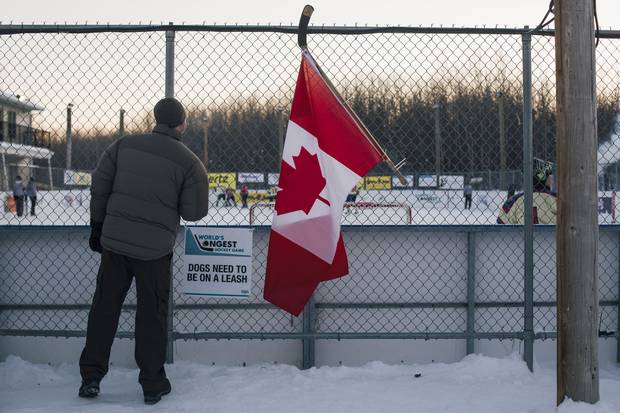
It was minus 35 degrees out when the game began on Feb. 9. The Edmonton area is in for a cold weekend before the game concludes on Monday afternoon.
CANADA'S GAME: MORE FROM THE GLOBE AND MAIL
